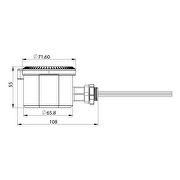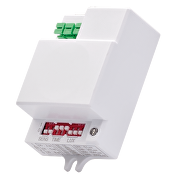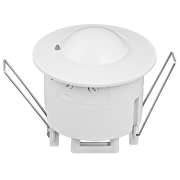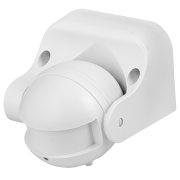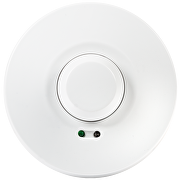Microwave sensors have higher sensitivity and greater detection range compared to PIR sensors. The signal of the microwave sensor can pass freely through wood, glass and thinner walls.
Main features of the sensor:
- When there is sufficient ambient light, the sensor will not turn on the light.
- When the light is insufficient, the sensor will turn on the light if movement is detected in the area.
- If there is no movement in the detection area and the time delay is over at maximum power, the sensor will dim the light.
- When the stand-by period is over at dimmed level, the sensor will turn off the light, if there is no movement in the detection area.
The sensor is designed for building-in in lighting fixtures with dimmable driver 0-10V DC. It is used when automation of the lighting is necessary. It can work with incandescent lamps and LED lighting. Its ingress protection rate IP65 makes it suitable for areas with high levels of dust and moisture.
Functions:
- Identifying daytime and nighttime
- Adjusting detecting distance
- Adjusting hold time
- Adjusting stand-by period
- Different dimming levels


